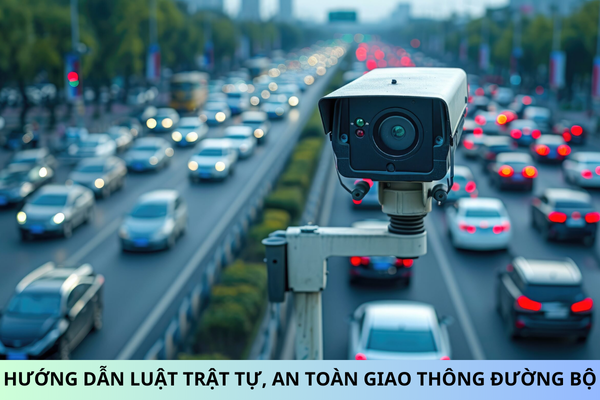Decree 151/2024/ND-CP guiding the Law on Road Traffic Order and Safety in Vietnam
Decree 151/2024/ND-CP guiding the Law on Road Traffic Order and Safety in Vietnam
On November 15, 2024, the Government of Vietnam issued Decree 151/2024/ND-CP guiding the Law on Road Traffic Order and Safety.
Decree 151/2024/ND-CP applies to domestic and foreign agencies, organizations, and individuals relating to road traffic order and safety within the territory of the Socialist Republic of Vietnam.
Decree 151/2024/ND-CP becomes effective from January 1, 2025.
Additionally, the following appendices are issued along with Decree 151/2024/ND-CP:
- Appendix 1: Technical requirements for priority vehicle signal devices.
- Appendix 2: Forms relating to the issuance of permits for using priority vehicle signal devices.
- Appendix 3: Forms relating to the issuance of permits for operating intelligent transport vehicles.
- Appendix 4: Forms relating to approval for Vietnamese international travel service businesses to organize for foreigners to bring foreign motor vehicles into Vietnam for tourism; organizations, individuals bringing right-hand drive cars to participate in traffic in Vietnam not for tourism purposes.

Decree 151/2024/ND-CP guiding the Law on Road Traffic Order and Safety in Vietnam (Image from Internet)
What information does the database on road traffic order and safety in Vietnam contain?
Based on Article 11 of Decree 151/2024/ND-CP, information in the Database on Road Traffic Order and Safety is as follows:
Article 11. Information in the Database on Road Traffic Order and Safety
- Information on the registration and management of motor vehicles and specialized equipment:
a) Information on owners of motor vehicles and specialized equipment:
For individuals: full name; date of birth; gender; personal identification number; phone number (if any); nationality; permanent residence; temporary residence, current address, vehicle registration address.
For organizations: name of the organization; name of the legal representative; address; tax code or establishment decision or organization's identification number (if any); phone number;
b) Information on vehicles as stipulated in Point a, Clause 2 of this Article;
[...]
Thus, the Database on Road Traffic Order and Safety includes the following information:
[1] Information on the registration and management of motor vehicles and specialized equipment.
[2] Information on the inspection of motor vehicles and specialized equipment.
[3] Information on invoices related to the sale of motor vehicles and specialized equipment: number, date of issuance; name, tax code, address, phone number of the seller; name, address of the buyer; product name.
[4] Information on the pre-registration fee of motor vehicles and specialized equipment: number, date of issuance, issuing authority of the pre-registration fee certificate; asset value for pre-registration fee calculation; pre-registration fee amount; information on the payee and the vehicle specifications.
[5] Information on the origin of imported and exported vehicles: number, date of issuance, issuing agency of the customs declaration; importing/exporting authority or enterprise; importing/exporting gateway and specifications of imported/exported vehicles.
[6] Information on training, testing, and issuing driving licenses; certificates on road traffic law knowledge.
[7] Information on operators of motor vehicles and specialized equipment: full name; personal identification number; date of birth; nationality; residence; driver's license number, class, issuing authority, number of road traffic law knowledge certificates, training institution, and issuance of knowledge certificates; information on health examination results of the vehicle operator.
[8] Information on mandatory motor vehicle and specialized equipment civil liability insurance of owners.
[9] Information on administrative violations concerning road traffic order and safety.
[10] Information on the journey of road transport vehicles and driver images.
[11] Information on the management of driving time of vehicle operators: time; transport business unit; vehicle license plate; driver's name; type of operation; start time; end time; driving duration.
[12] Information on road traffic accidents.
[13] Information on the health of drivers and operators of specialized machinery: full name; personal identification number; date of birth; practicing driving a car or not; workplace (for vehicle operators); place of health examination; health examination time; clinical examination results; para-clinical examination results; health conclusion of the driver or operator of specialized machinery.
Which types of vehicles are considered priority vehicles in Vietnam?
According to Article 27 of the Law on Road Traffic Order and Safety 2024, priority vehicles include:
Article 27. Priority Vehicles
- Priority vehicles include fire trucks of the Fire Prevention and Fighting Police and rescue vehicles, fire trucks of other forces mobilized for fire missions; vehicles of the military, police, and prosecution office on urgent duty; vehicle convoys escorted by the Traffic Police; ambulances on duty; vehicles for flood prevention on duty; vehicles for rescue, disaster recovery, epidemic control, or urgent tasks as provided by law; funeral convoys.
- Priority vehicles have the right to go before others at intersections from any direction in the following order of priority from top to bottom:
a) Fire trucks of the Fire Prevention and Fighting Police and rescue vehicles and fire trucks of other forces mobilized for fire missions.
b) Vehicles of the military, police, prosecution office on urgent duties; vehicle convoys escorted by the Traffic Police.
c) Ambulances on duty.
d) Vehicles for flood prevention on duty; vehicles for rescue, disaster recovery, epidemic control, or urgent tasks as provided by law.
dd) Funeral convoys.
[...]
Thus, priority vehicles include:
- Fire trucks of the Fire Prevention and Fighting Police and rescue vehicles and fire trucks of other forces mobilized for fire missions.
- Vehicles of the military, police, and prosecution office on urgent duty.
- Vehicle convoys escorted by the Traffic Police.
- Ambulances on duty.
- Vehicles for flood prevention on duty.
- Vehicles for rescue, disaster recovery, epidemic control, or urgent tasks as provided by law.
- Funeral convoys.










